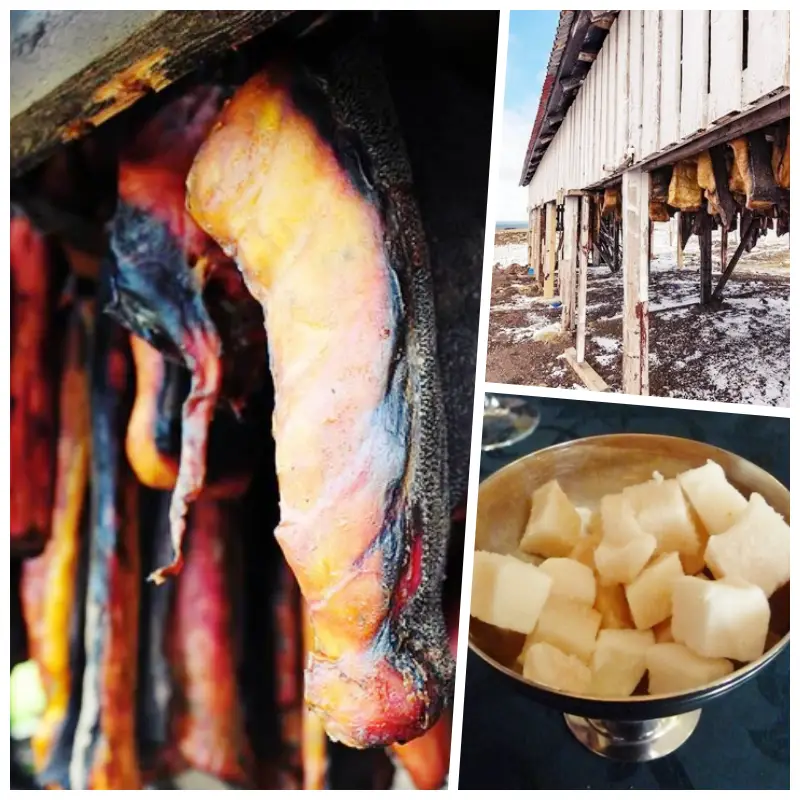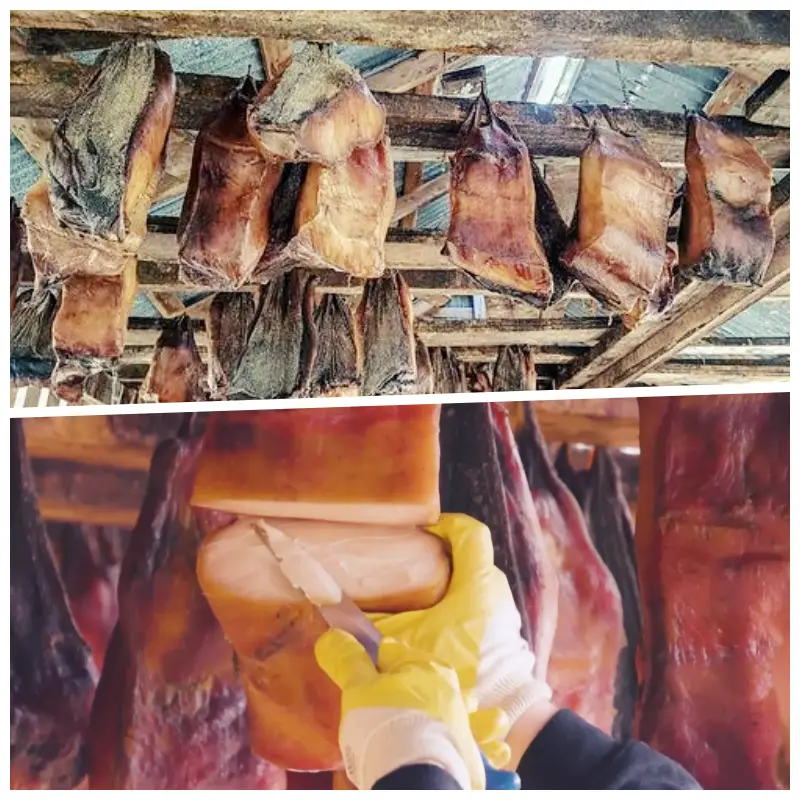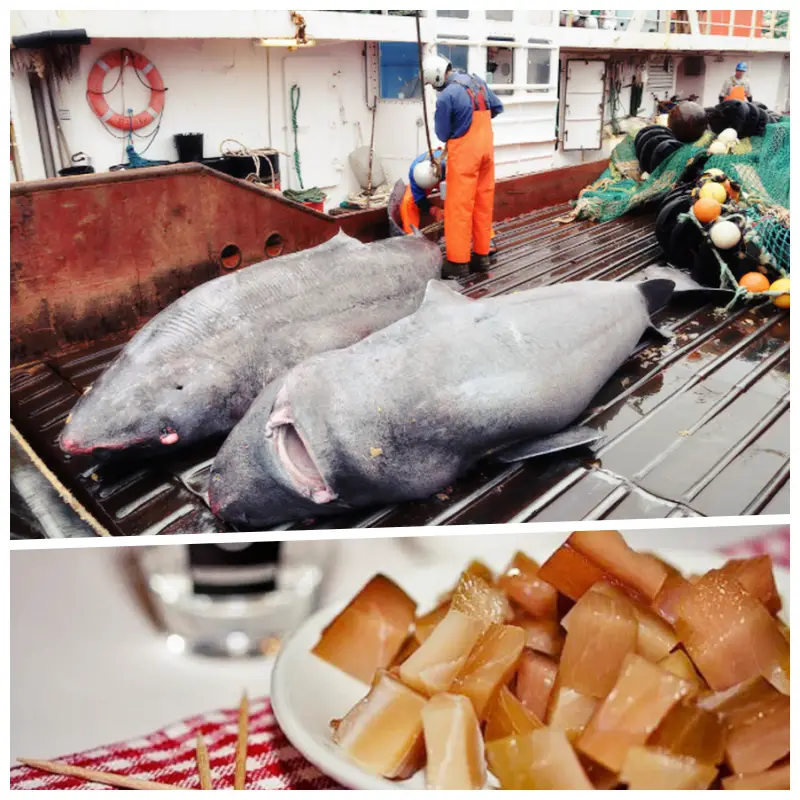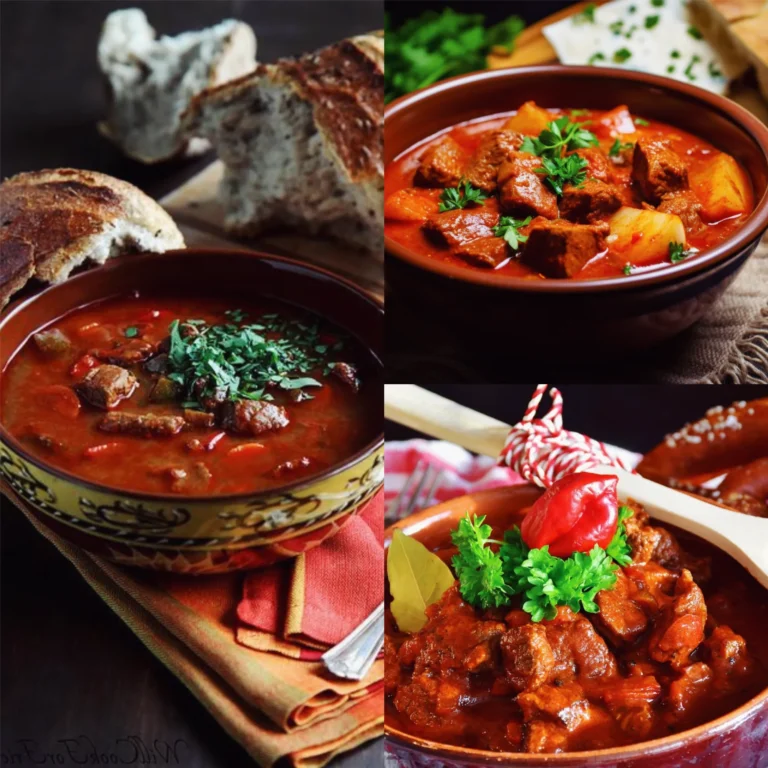
Hákarl: Iceland’s Unique Delicacy That Challenges Even the Bravest Foodies
Hákarl, Iceland’s notorious fermented shark dish, has intrigued travelers with its exotic reputation. Yet, not everyone has the courage to try this unique delicacy. Known for its strong flavor and pungent aroma, Hákarl is a traditional Icelandic dish with deep historical roots.
Origins and Traditional Preparation of Hákarl
Hákarl, or fermented shark, is a culinary tradition that dates back to the Viking era. Due to the harsh climate and scarcity of food, the Vikings in Iceland sought alternative sources of sustenance. The Greenland shark, with its slow swimming speed of approximately 1.22 km/h, became a viable target for their hunts.
However, fresh Greenland shark meat contains high levels of uric acid and trimethylamine oxide, making it toxic and inedible. To make it safe, the Vikings developed a unique fermentation process. The preparation involves gutting the shark and burying it in a sand pit covered with stones. This method compresses the meat and allows it to ferment for 4 to 6 months, effectively eliminating the toxins.

After fermentation, the shark is unearthed, cut into pieces, and dried naturally. Once the outer layer turns a dark brown and develops a strong odor, the Hákarl is ready to be consumed. The inner meat, which is white and resembles soft cheese, is enjoyed by Icelanders, often paired with a shot of Brennivín, a traditional Icelandic schnapps.
Chef’s Review and Public Perception
World-renowned chef Anthony Bourdain described Hákarl as one of the worst dishes he had ever tasted, citing its overpowering smell reminiscent of ammonia. This sentiment is echoed by many travelers who find the dish’s aroma off-putting. Consequently, many visitors shy away from trying this Icelandic specialty.
Conversely, some adventurous tourists find Hákarl surprisingly delicious, especially when enjoyed with Brennivín. The contrasting flavors of the fermented shark and the schnapps create a unique tasting experience.

Hákarl remains a polarizing dish with mixed reviews on its flavor. Despite its controversial taste, it is a traditional food that embodies Icelandic culture and history. If you find yourself in Iceland, daring to taste this ancient delicacy could offer a memorable culinary adventure and a deeper appreciation of Icelandic heritage.






